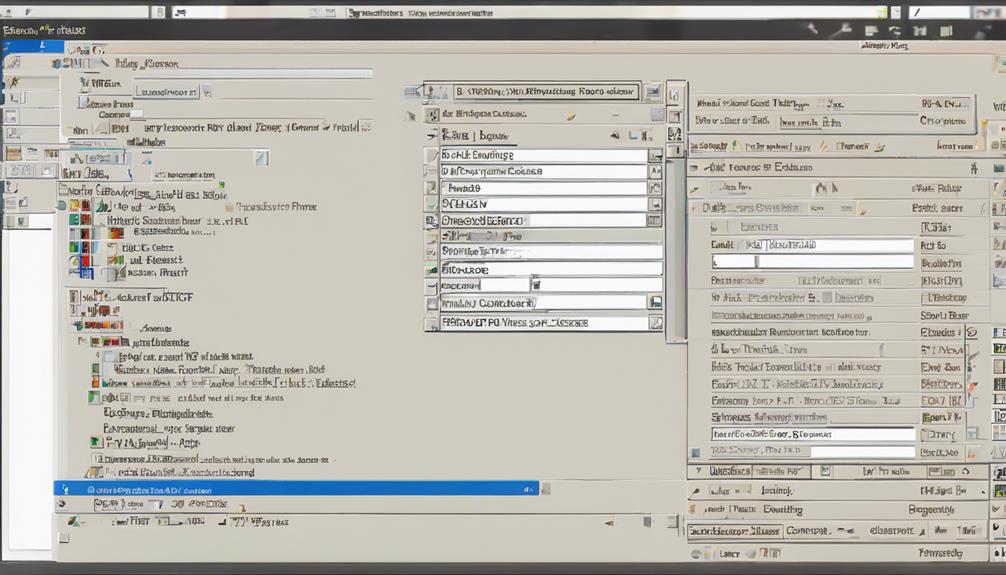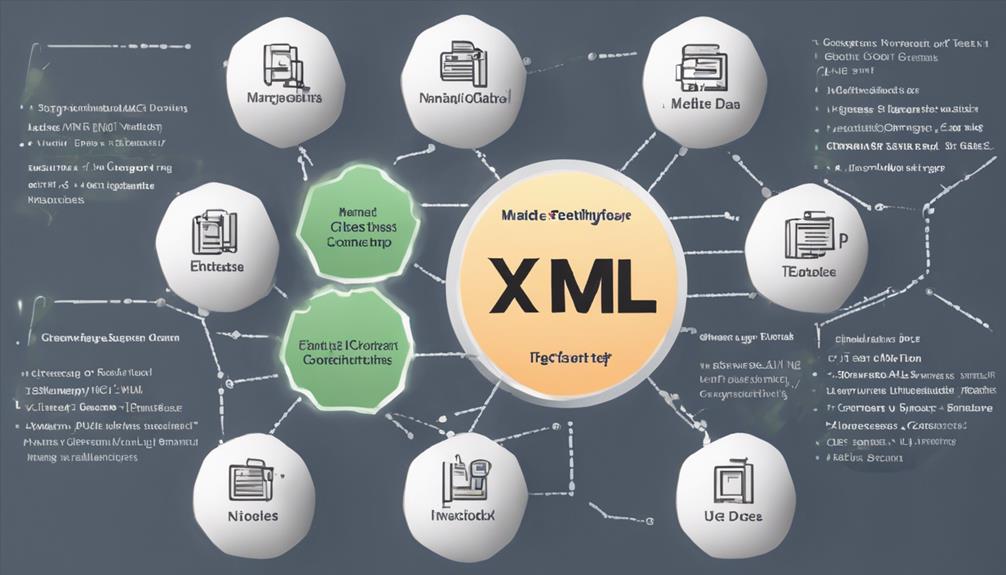Have you ever wondered what steps are crucial to secure XML data formatting services effectively? Understanding the importance of securing sensitive information is just the beginning. By exploring key security measures and best practices, you can ensure the protection of your XML data from potential threats. Stay tuned to discover essential strategies that will safeguard your data and maintain the integrity of your XML formatting services.
Establishing Security Requirements
When securing XML data formatting services, the initial step is establishing clear and comprehensive security requirements. Access control is crucial in ensuring that only authorized individuals or systems can view or manipulate the data. By defining specific roles and permissions, you can limit who can access sensitive information, reducing the risk of unauthorized access.
Secure authentication is another vital aspect of securing XML data formatting services. Implementing strong authentication mechanisms, such as multi-factor authentication or biometric authentication, adds an extra layer of security to verify the identities of users accessing the data. This helps prevent unauthorized users from gaining entry to the system and ensures that only legitimate users can interact with the XML data.
Selecting Security Tools
To effectively fortify the security of your XML data formatting services, the next critical step involves selecting appropriate security tools. When choosing security tools, it is essential to prioritize solutions that enable robust security audits and effective access control mechanisms. Security audits play a crucial role in identifying vulnerabilities and ensuring compliance with security standards. By utilizing security audit tools, you can regularly assess the security posture of your XML data formatting services and address any weaknesses promptly.
Access control tools are equally vital for safeguarding your XML data formatting services. These tools enable you to manage user permissions, restrict unauthorized access, and prevent data breaches. Implementing robust access control measures helps prevent malicious actors from compromising sensitive information and ensures that only authorized individuals can interact with the data.
When selecting security tools for your XML data formatting services, prioritize solutions that offer comprehensive security audits and robust access control features. By investing in these tools, you can enhance the overall security posture of your services and mitigate potential risks effectively.
Implementing Data Encryption
Implementing data encryption is a fundamental aspect of bolstering the security of your XML data formatting services. To ensure the protection of your sensitive data, consider the following key steps:
- Key Management: Establish a robust key management system to securely generate, store, and distribute encryption keys. Regularly update and rotate keys to enhance security and prevent unauthorized access.
- Data Integrity: Implement measures such as digital signatures or checksums to verify the integrity of your encrypted data. This ensures that the data has not been tampered with during transmission or storage.
- Encryption Algorithms: Select strong encryption algorithms like AES (Advanced Encryption Standard) to safeguard your XML data. Ensure that the encryption methods used are compliant with industry standards and best practices to enhance the overall security posture of your data formatting services. By meticulously managing keys, ensuring data integrity, and utilizing robust encryption algorithms, you can significantly enhance the security of your XML data formatting services.
Setting up Firewalls
Having fortified your XML data formatting services through the implementation of data encryption, the next critical step in enhancing your security posture is setting up firewalls. Firewalls act as a barrier between your internal network and external threats, allowing you to control incoming and outgoing traffic based on predetermined security rules. By configuring firewalls effectively, you can prevent unauthorized access to your systems and protect sensitive XML data from malicious attacks.
When setting up firewalls, ensure that network monitoring is in place to track traffic patterns and detect any anomalies that may indicate a security breach. Additionally, implement access control mechanisms to restrict access to your XML data formatting services only to authorized users or systems. By combining firewalls with rigorous network monitoring and access control measures, you can create a robust security framework that safeguards your XML data effectively. Remember, proactive security measures like firewalls are essential in defending against evolving cyber threats.
Enabling Secure Data Transfer
When ensuring the secure transfer of data within your XML data formatting services, establishing encrypted connections plays a crucial role in safeguarding sensitive information. To enable secure data transfer effectively, consider the following:
- Data Integrity: Implement measures such as digital signatures or checksums to ensure that data remains intact and unaltered during transit. This prevents unauthorized modifications that could compromise the integrity of the information being exchanged.
- Access Control: Utilize authentication mechanisms like usernames, passwords, or more advanced methods such as multi-factor authentication to control and verify the identities of users accessing the data transfer process. This helps prevent unauthorized access to sensitive information.
- Encryption Protocols: Employ robust encryption algorithms like AES (Advanced Encryption Standard) or TLS (Transport Layer Security) to secure data in transit. Encryption scrambles the data, making it unreadable to unauthorized parties and providing an additional layer of protection against interception or eavesdropping.
Frequently Asked Questions
How Can I Ensure Compliance With Industry-Specific Data Security Regulations?
Ensure compliance with industry-specific data security regulations by implementing data encryption and access controls. Classify data based on sensitivity levels. Regularly review and update security measures to adhere to regulatory requirements, safeguarding sensitive information.
What Measures Should Be Taken to Prevent Insider Threats to XML Data?
To thwart treacherous threats to XML data, apply adept access controls and robust data encryption. Ensure insiders can’t infiltrate or manipulate sensitive information. Vigilance and verification are vital to thwarting these vulnerabilities.
Are There Any Best Practices for Securely Storing XML Data Backups?
To securely store XML data backups, utilize encryption techniques to safeguard data integrity and confidentiality. Implement robust access controls to restrict unauthorized access. Regularly audit and monitor backups for compliance and potential vulnerabilities.
How Often Should Security Audits Be Conducted for XML Data Formatting Services?
For security assessment of XML data formatting services, conduct audits at least annually. Ensure data encryption protocols are up-to-date. Regular audits help identify vulnerabilities and strengthen defenses. Keep abreast of evolving threats to safeguard sensitive information effectively.
What Steps Should Be Taken in Case of a Security Breach in XML Data Systems?
In case of a security breach in XML data systems, your incident response should prioritize activating encryption protocols. Follow data breach notification procedures promptly to mitigate risks. Swift action is crucial to safeguard sensitive information.



